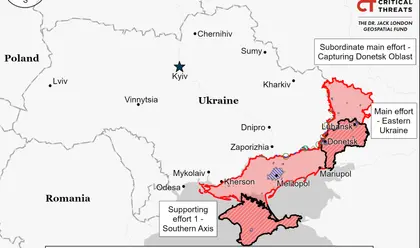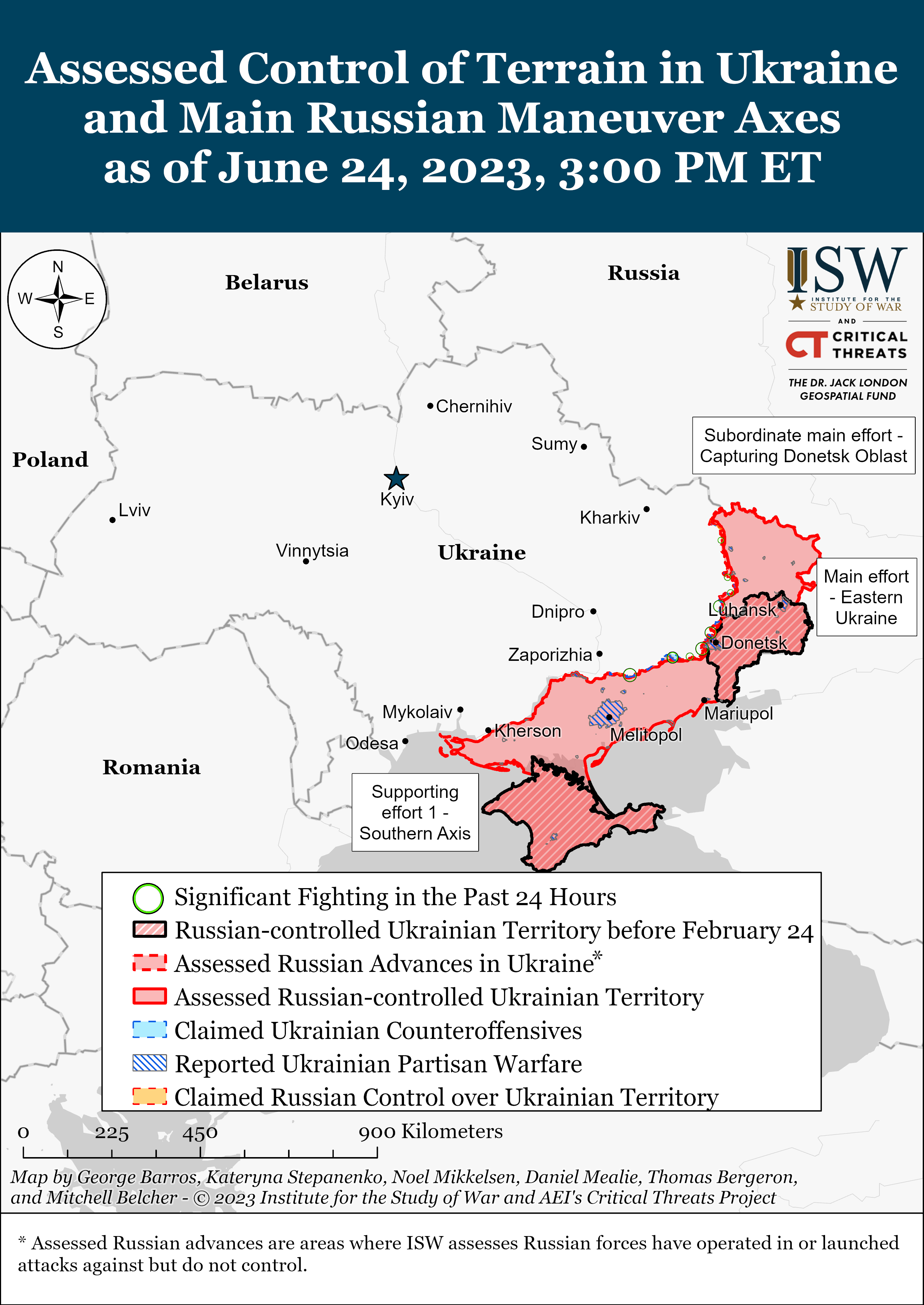Key Takeaways
- The Kremlin announced late on June 24 that Belarusian dictator Alexander Lukashenko negotiated a deal under which Wagner Group financier Yevgeny Prigozhin will travel to Belarus without facing criminal charges in Russia; some portion of Wagner Group fighters will sign contracts with the Russian Ministry of Defense (MoD); and no Wagner personnel will be charged for their involvement in an armed rebellion.
- The Wagner Group encircled the Russian Southern Military District (SMD)’s headquarters in Rostov-on-Don and drove to within 330km of Moscow City prior to the announcement of the deal. Wagner forces will reportedly begin withdrawing to their bases soon, and footage reportedly depicts Prigozhin departing Rostov-on-Don.
- The Kremlin struggled to cohere an effective rapid response to Wagner’s advances, highlighting internal security weaknesses likely due to surprise and the impact of heavy losses in Ukraine.
- Putin unsurprisingly elected to back the Russian Ministry of Defense (MoD) and its ongoing efforts to centralize control of Russian irregular forces (including Wagner) over Prigozhin.
- The Lukashenko-brokered agreement will very likely eliminate Wagner Group as a Prigozhin-led independent actor in its current form, although elements of the organization may endure under existing and new capacities.
- Prigozhin likely gambled that his only avenue to retain Wagner Group as an independent force was to march against the Russian MoD, likely intending to secure defections in the Russian military but overestimating his own prospects.
- The optics of Belarusian President Lukashenko playing a direct role in halting a military advance on Moscow are humiliating to Putin and may have secured Lukashenko other benefits.
- The Kremlin now faces a deeply unstable equilibrium. The Lukashenko-negotiated deal is a short-term fix, not a long-term solution, and Prigozhin’s rebellion exposed severe weaknesses in the Kremlin and Russian MoD.
- Russian forces launched their largest series of missile strikes against Ukraine in recent months on June 24, despite the armed rebellion within Russia.
- Ukrainian forces conducted counteroffensive operations on at least two sectors of the front and reportedly made advances on June 24, and regular fighting continued on other sectors of the line.
Authors: Kateryna Stepanenko, Karolina Hird, Riley Bailey, Angelica Evans, and Mason Clark.
JOIN US ON TELEGRAM
Follow our coverage of the war on the @Kyivpost_official.
See the original here.
To suggest a correction or clarification, write to us here
You can also highlight the text and press Ctrl + Enter
You can also highlight the text and press Ctrl + Enter








